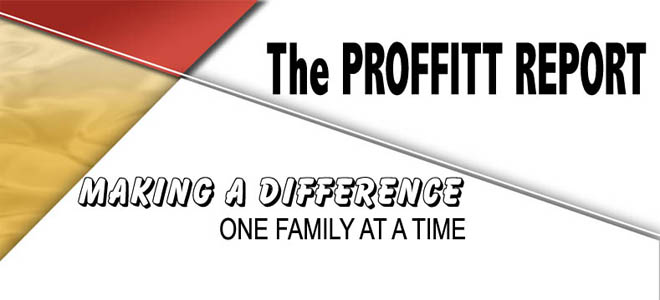TO ALL THE KIDS WHO SURVIVED THE 1930's, 40's, 50's, 60's and 70's!! First, we survived being born to mothers who smoked and/or drank while they were pregnant.
They took aspirin, ate blue cheese dressing, tuna from a can and didn't get tested for diabetes.
Then after that trauma, we were put to sleep on our tummies in baby cribs covered with bright colored lead-base paints.
We had no childproof lids on medicine bottles, locks on doors or cabinets and when we rode our bikes, we had baseball caps not helmets on our heads.
As infants & children, we would ride in cars with no car seats, no booster seats, no seat belts, no air bags, bald tires and sometimes no brakes.
Riding in the back of a pick- up truck on a warm day was always a special treat.
We drank water from the garden hose and not from a bottle.
We shared one soft drink with four friends, from one bottle and no one actually died from this.
We ate cupcakes made with Lard, white bread, real butter and bacon. We drank FLAV- OR- AID made with real white sugar. And, we weren't overweight. WHY? Because we were always outside playing....that's why!
We would leave home in the morning and play all day, as long as we were back when the streetlights came on. No one was able to reach us all day. And, we were OKAY.
We would spend hours building our go-carts out of scraps and then ride them down the hill, only to find out we forgot the brakes. After running into the bushes a few times, we learned to solve the problem.
We did not have Play stations, Nintendo's and X-boxes. There were no video games, no 150 channels on cable, no video movies or DVD's, no surround-sound or CD's, no cell phones, no personal computers, no Internet and no chat rooms.
WE HAD FRIENDS and we went outside and found them!
We fell out of trees, got cut, broke bones and teeth and there were no lawsuits from these accidents.
We would get spankings with wooden spoons, switches, ping pong paddles, or just a bare hand and no one would call child services to report abuse.
We ate worms and mud pies made from dirt, and the worms did not live in us forever.
We were given BB guns for our 10th birthdays, made up games with sticks and tennis balls and, although we were told it would happen, we did not put out very many eyes.
We rode bikes or walked to a friend's house and knocked on the door or rang the bell, or just walked in and talked to them.
Little League had tryouts and not everyone made the team. Those who didn't had to learn to deal with disappointment. Imagine that!!
The idea of a parent bailing us out if we broke the law was unheard of. They actually sided with the law!
These generations have produced some of the best risk-takers, problem solvers and inventors ever.
The past 50 years have been an explosion of innovation and new ideas. What can kids today do besides push buttons!
We had freedom, failure, success and responsibility, and we learned how to deal with it all.
If YOU are one of them, CONGRATULATIONS!
You might want to share this with others who have had the luck to grow up as kids, before the lawyers and the government regulated so much of our lives for our own good.
Kind of makes you want to run through the house with scissors, doesn't it?
 After two months of surging sales, home resales fell by 100,000 units last month to 4.4 million homes nationwide.
After two months of surging sales, home resales fell by 100,000 units last month to 4.4 million homes nationwide.
 Black Friday is 3 days away. It's the official start of the 2010 Holiday Shopping Season.
Black Friday is 3 days away. It's the official start of the 2010 Holiday Shopping Season. According to
According to 
 Newspaper stories can be misleading sometimes -- especially with respect to real estate. We saw a terrific example of this Wednesday.
Newspaper stories can be misleading sometimes -- especially with respect to real estate. We saw a terrific example of this Wednesday. Homebuilder confidence is higher for the third straight month this month.
Homebuilder confidence is higher for the third straight month this month.


 After 3 straight months of improvement, the Pending Home Sales Index slid lower in September. As compared to August, September's reading
After 3 straight months of improvement, the Pending Home Sales Index slid lower in September. As compared to August, September's reading  The
The  Mortgage rates have been falling since April, shedding more than 1 percentage point since the Refi Boom began. Today, that momentum could lose some steam.
Mortgage rates have been falling since April, shedding more than 1 percentage point since the Refi Boom began. Today, that momentum could lose some steam. Today, the Federal Open Market Committee voted 9-to-1 to leave the Fed Funds Rate unchanged within in its target range of 0.000-0.250 percent.
Today, the Federal Open Market Committee voted 9-to-1 to leave the Fed Funds Rate unchanged within in its target range of 0.000-0.250 percent. The Federal Reserve ends a scheduled, 2-day meeting today. It's the seventh of
The Federal Reserve ends a scheduled, 2-day meeting today. It's the seventh of  The amount of air that leaks from the seams of a typical home is the same amount of air that would escape through an open window. It's why home care experts recommend a routine caulking of a home's windows and doors -- at least once per year.
The amount of air that leaks from the seams of a typical home is the same amount of air that would escape through an open window. It's why home care experts recommend a routine caulking of a home's windows and doors -- at least once per year.





